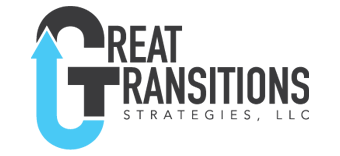Did you know that on the last day of Sept 2021 job openings, a measure of labor demand, was reported at 10.4 million. The reason was not weak demand, it was employers unable to find workers they considered qualified.
Jobs are available, qualified workers are what employers are missing.
Does your workplace need dedicated, highly motivated, and adaptable workers who learn quickly and are capable of leading others through uncertain challenges? Everybody does. How have you or your organization tapped into the veteran population?
Look back at the applications received and interviews conducted over the past two years, how many veterans made it to the interview level?
I coach over 30 transitioning veterans a year and hear the stories of frustration and challenges of the transition process. I have seen veterans land their dream job and also have seen a lot of frustration and rejection.
You might think that highly educated and trained individuals should find their next chapter outside the military fairly easily. Not necessarily the case, separating military members contend with unfounded stereotypes and biases. Here are some thoughts to consider.
When you hear “U.S. Active-Duty Service Member” what is the picture that comes to mind?
When you hear “U.S. Veteran in the work place” what is the picture that comes to mind?
For the active-duty service member a typical picture is a US serviceman in sand colored combat gear with their weapon at the ready. I deliberately said man not woman. Women now make up almost 15% of our force.
In the workplace did the image of a young professional man or woman in a business suit come to mind? Not likely.
A large portion of the civilian workforce does not understand what a veteran can bring to their workplace. Worse yet veterans contend with significant bias.
According to the Cohen Veterans Network here are some stereotypes:
- Two-Thirds (67%) of Americans believe the Majority of Veterans Experience PTSD
- One in Four (26%) Americans believe the Majority of People with PTSD are Violent/Dangerous
- Nearly One in Four (23%) Americans believe PTSD is Not Treatable
If hiring managers believe they are looking across the table at someone with PTSD that is untreatable and very likely violent or dangerous, the veteran’s prospects are not good.
The facts are that Iraq and Afghanistan veterans are impacted by PTSD at a rate of 11-20%. Those impacted are not by default dangerous, and the condition is treatable.
So how are veterans actually doing in the workplace? The overall unemployment rate in the U.S. at the end of August was 4.8% with the veteran unemployment rate at 3.6%. Better than their peers. A significant achievement considering the challenges.
A disappointment is many veterans are under employed. Meaning they are employed at a level below their education and skill level. According to Recruitmilitary.com 57% of veterans are underemployed,15.7% higher than the non-veteran population.
If you are an employer with a job opening there is a well-trained highly capable veteran looking to be a positive force in your organization. It will take you some time and education to understand how their experience can benefit you. Amazon and GE are two companies that have mastered the process of hiring veterans and are reaping the benefits. Fortune 500 listed #2 and #38 respectively.
With 10.4 million job openings how is the veteran unemployment as high a 3.6%?
Consider the impact on your organization if you mastered the process just as well as Amazon and GE.






